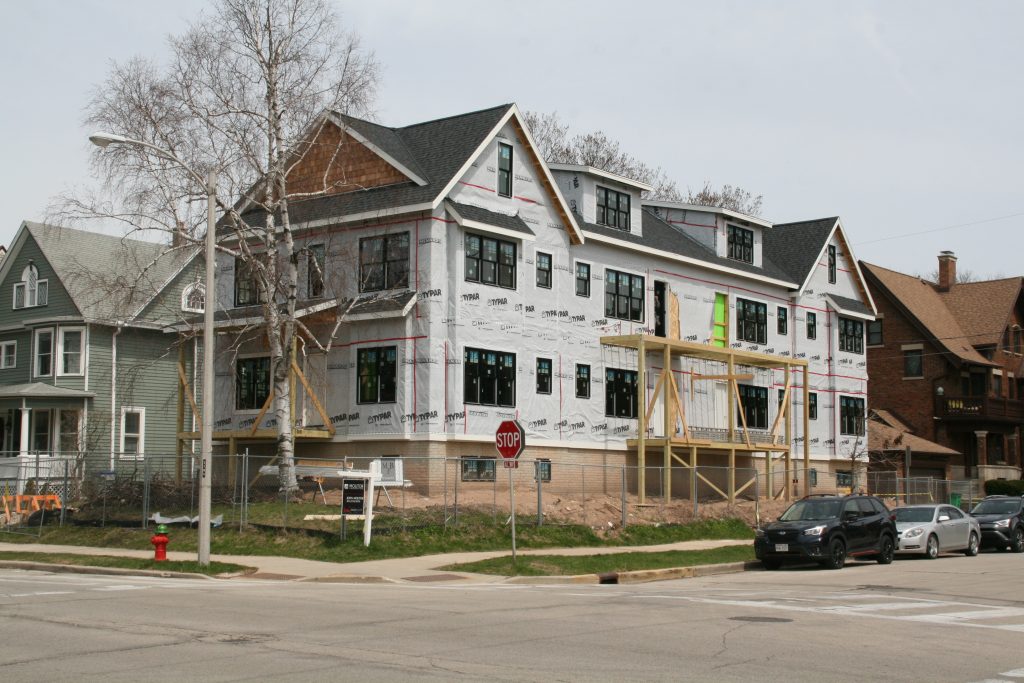City Revises Its ‘Growing MKE’ Plan, Including Changing The Name
A 'benefit and harm analysis' also attempts to address critics' concerns.
After encountering substantial public and political resistance last July, the Department of City Development (DCD) unveiled its revised Growing MKE plan Thursday.
The plan still maintains the administration’s goal of improving the amount and types of housing options available in Milwaukee, but includes several changes from its 2024 revision.
Most noticeable is a new name.
Gone is the easy-to-understand, but polarizing “Growing MKE” in favor of “Milwaukee’s Comprehensive Plan: Housing Element.” While much of the plan speaks to zoning changes, the plan is formally a change to the city’s state-mandated comprehensive plan. Adopting the plan, which requires Common Council approval, would still require future changes to the city’s zoning code, with public hearings on specific components.
“The title was updated to align with changes in the proposed plan, which better reflect with the goals of meeting the housing needs of existing residents and neighborhoods, as well as those who will call Milwaukee home in the future. The updates to the Plan since the July 2024 draft reinforce these same goals, which remain the foundation of the Housing Element,” says an email from the city.
The revised 72-page plan still includes support for a number of new housing types, including legalizing townhomes on any residential parcel and approving accessory dwelling units (ADU), commonly called carriage units. But it also drops support for other potential density increases included in a prior version of the plan.
A proposal to allow two and three-unit buildings to be constructed in all single-family zoning districts was removed. A four-unit option in certain circumstances was also removed. The ADU component, similar to a stand-alone one pending before the council, would allow second units in single-family zoning districts, but only with owner occupancy and strict design and size restrictions. Cottage courts, a collection of small homes around a courtyard, would still be permitted.
In advance of the five-hour July hearing, DCD had already dropped a change that would have allowed small multi-family buildings to be constructed in many more locations. But the proposal still encountered substantial opposition from community groups who thought the proposal didn’t do enough to address a variety of housing issues.
In response to criticism about what wasn’t in the prior version, the revised plan speaks more to specific efforts the city should make to address housing issues, including lobbying for changes at the state level.
The plan maintains a commitment to creating “missing middle” solutions and includes a graphic to illustrate the issue, showing a gap between single-family and two-family homes and much larger buildings. “Milwaukee’s existing housing is about two-thirds single- and two-family houses. The rest is in larger multi-family buildings, without much in between. This limits housing choices, which affects affordability,” says the plan.
The Housing Element draft plan also maintains a number of technical changes to zoning provisions like minimum lot sizes intended to enable more housing.
The seven key priorities, a new section, listed in the plan are: increase housing choice and access, repair homes and neighborhoods, commitment to intergovernmental collaboration and advocacy, commitment to home ownership, commitment to anti-displacement, economic resilience and walkable neighborhoods.
New to the effort is a “benefit and harm analysis,” which was requested by the City Plan Commission. The 49-page document, nearly the length of the plan itself, details how the zoning components of the plan are just “one piece of the puzzle” and explores the risk of increased gentrification or other negative factors if no action is taken. The analysis attempts to lay out how residents and property owners both are intended to benefit from the changes. Many aspects read as written rebuttals to claims made by opponents, including that the plan would drive up taxes or immediately legalize certain development styles without protections.
Two webinars are scheduled to discuss the updated plan: May 7 and May 13. Both events are from 6 to 7 p.m. The May 7 event includes Spanish and Hmong translation. The EnageMKE website contains more information.
The City Plan Commission, which previously held the proposal, is expected to review the revised plan this summer.
Milwaukee’s zoning code was initially adopted in 1922 and last substantially overhauled in 2002.
The proposal is co-sponsored by council members JoCasta Zamarripa and Mark Chambers, Jr. It includes a new in memoriam note to its original council champion Jonathan Brostoff, who passed away in November.
Mayor Cavalier Johnson, who touted a vision of growing Milwaukee to one million residents while on the campaign trail in 2022, stood in front of a “Growing Milwaukee” sign at his 2024 State of the City speech. Will the mayor now be able to get his vision adopted?
Legislation Link - Urban Milwaukee members see direct links to legislation mentioned in this article. Join today
If you think stories like this are important, become a member of Urban Milwaukee and help support real, independent journalism. Plus you get some cool added benefits.
More about the Growing MKE proposal
- Milwaukee Seeks ‘Missing Middle’ Housing Developers - Jeramey Jannene - Nov 24th, 2025
- Milwaukee Aims To Build ‘Missing Middle’ Housing in 2026 - Jeramey Jannene - Oct 29th, 2025
- Despite Its Passage, ‘Growing MKE’ Still Not A Done Deal - Jeramey Jannene - Sep 16th, 2025
- Mayor Signs Housing Legislation, Praises Late Jonathan Brostoff - Jeramey Jannene - Jul 16th, 2025
- Council Adopts Growing MKE Plan - Jeramey Jannene - Jul 15th, 2025
- After Lengthy Debate, Council Legalizes Carriage Homes - Jeramey Jannene - Jul 15th, 2025
- Housing Plan Wins Key Council Committee Endorsement - Jeramey Jannene - Jul 9th, 2025
- City Hall: Committee Waters Down Proposed ‘Granny Flat’ Plan - Jeramey Jannene - Jun 17th, 2025
- Madison Pursuing Its Own Zoning Reform Similar To ‘Growing MKE’ - Sarah Lehr - Jun 12th, 2025
- ‘Growing MKE’ Proposal Picks Up Key Endorsement - Jeramey Jannene - Jun 2nd, 2025
Read more about Growing MKE proposal here
Political Contributions Tracker
Displaying political contributions between people mentioned in this story. Learn more.



















Variety in housing types is so IMPORTANT. The appeal of a neighborhood comes from the human-sized scale of it’s homes/buildings. Charm matters, too. I appreciate the work, listening, adjustments happening in this project…whatever the name is. If name change helps people feel like, and hopefully have, skin in the game…GREAT!
These changes will have a disastrous effect on housing affordability in the city. Do these fools not understand the concept of supply and demand? How are we to build more affordable housing supply if not by first allowing it within the city? Pathetic of the councilmembers who introduced these changes to have a “memoriam” note to Brostoff while their proposal spits in the face of what he worked for.
It’s sad how much all this is being watered down.